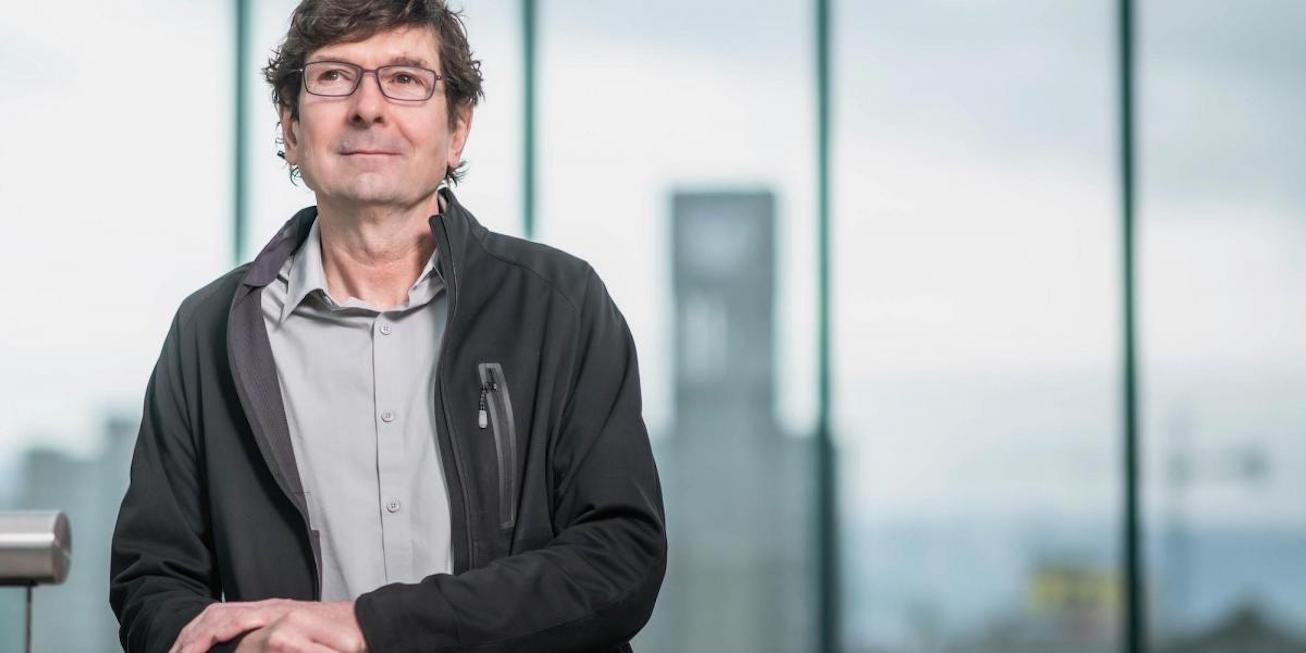UBC evolutionary biologist Dr. Dolph Schluter named AAAS Fellow
April 18, 2024

April 18, 2024

Internationally renowned evolutionary biologist Dr. Dolph Schluter has been elected to the newest class of American Association for the Advancement of Science (AAAS) fellows, among the most distinct honours within the global scientific community.
AAAS, the world’s largest general scientific society and publisher of the Science family of journals, recognized Dr. Schluter for his “outstanding contributions to the field of evolutionary biology, including distinguished work in the study of ecological speciation and adaptive radiation.”
“As we celebrate the 150th anniversary of the AAAS Fellows, AAAS is proud to recognize the newly elected individuals. This year’s class embodies scientific excellence, fosters trust in science throughout the communities they serve, and leads the next generation of scientists while advancing scientific achievements,” said Dr. Sudip S. Parikh, AAAS chief executive officer and executive publisher of the Science family of journals.
A University Killam Professor, Dr. Schluter is appointed with the department of Zoology and the Biodiversity Research Centre at UBC. In 2023, he was awarded the Crafoord Prize in Biosciences for his research into the role of natural selection in adaptive radiation and the origin of species. He has been elected a fellow of the Royal Society of Canada, US National Academy of Sciences, and the Royal Society of London.
Dr. Schluter’s earliest work was carried out on the evolutionary ecology and morphology of Darwin’s famous finches in the Galápagos Islands. The work was a major component of a long-term study of the finches that has since been recognized as one of the most successful field studies of evolution.
More recently, Dr. Schluter has been working on a mini-explosion of new species of three-spined sticklebacks in the coastal lakes of British Columbia. The lakes formed less than 12,000 years ago after the last ice age. As a result, the local stickleback species are among the youngest on Earth and no more than two species occur in any one lake—but pairs of species in different lakes seem to have evolved completely independently.
“The origin of species has fascinated scholars and the public alike for hundreds of years, and Dolph’s work over the past four decades has been incredibly influential in shaping the current research agenda in the field,” said Dr. Mark MacLachlan, Dean pro tem of the Faculty of Science. “We’re incredibly proud to have him as part of UBC’s biodiversity research community.”
The 2023 class of AAAS Fellows includes 502 scientists, engineers, and innovators spanning 24 scientific disciplines who are being recognized for their scientifically and socially distinguished achievements. AAAS Fellows are a distinguished cadre of scientists, engineers, and innovators who have been recognized for their achievements across disciplines ranging from research, teaching, and technology, to administration in academia, industry, and government, to excellence in communicating and interpreting science to the public.
We honour xwməθkwəy̓ əm (Musqueam) on whose ancestral, unceded territory UBC Vancouver is situated. UBC Science is committed to building meaningful relationships with Indigenous peoples so we can advance Reconciliation and ensure traditional ways of knowing enrich our teaching and research.
Learn more: Musqueam First Nation